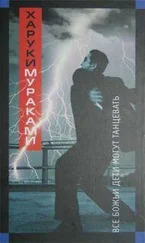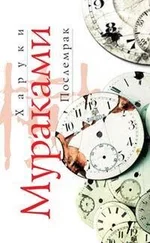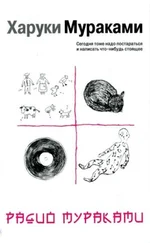“A different person?”
“After he returned to Japan, he didn’t play around anymore, and just stayed at home focusing on his painting. And he didn’t socialize anymore. After he got back to Tokyo he was a bachelor for a long time, but once he could earn a good living painting, like the idea had just occurred to him, he suddenly and unexpectedly married a distant relative back home. For all the world like he was balancing the account book of his life or something. It was a late marriage for him. And then I was born. I have no clue if he ever played around with other women after he got married. Though I can say that he no longer made a show of having a good time.”
“Quite a change.”
“His parents were really happy, though, at how he’d changed. No more messy affairs for them to clean up. But none of our relatives could tell me what had happened to him in Vienna, or why he rejected Western painting in favor of Japanese-style art. When it came to those things my father’s mouth was clamped shut, like an oyster at the bottom of the sea.”
And even if you pried open that shell now, there would be nothing inside. I thanked Masahiko and hung up.
—
It was by total coincidence that I discovered the painting by Tomohiko Amada, the one with the unusual title, Killing Commendatore .
Sometimes in the middle of the night I’d hear a faint rustling sound from the attic above the bedroom. At first I thought it must be mice, or a squirrel that had found its way into the attic. But the sound was clearly not that of a rodent’s feet scurrying around. Nor that of a slithering snake. It sounded more like oil paper being crumpled up. Not loud enough to keep me from sleeping, but it did concern me that there was some unknown creature in the house. I figured it might be an animal that could cause some damage.
After searching around, I located the opening to the attic in the ceiling in the back of the guest bedroom closet. I lugged over the aluminum ladder from the storage shed and, flashlight in one hand, pushed open the cover. I timidly stuck my head through and looked around. The attic was bigger than I’d thought, and dark. A small amount of sunlight filtered in through the small vent holes on either side. I shone the flashlight around but didn’t see anything. At least nothing was moving. I took the plunge and hauled myself up into the attic.
The place smelled dusty, but not enough to bother me. The attic was apparently well ventilated and there wasn’t much dust on the floor. Several thick beams hung low on the ceiling, but as long as I avoided them I could walk around okay. I edged forward and checked both vents. Both were covered with screens so no animals could get in, but the screen on the north vent had a gap in it. Something might have knocked against it and ripped it. Or else an animal had intentionally ripped the wire to get inside. Either way, the opening was large enough for a smallish animal to easily scramble in.
I spotted the culprit I’d been hearing at night, silently settled on top of a beam in the dark. It was a small, gray horned owl. The owl’s eyes were closed and it seemed to be sleeping. I switched off my flashlight and stood away to silently observe without frightening it. I’d never seen a horned owl up close before. It looked less like an owl than like a cat with wings. It was a beautiful creature.
The owl most likely rested here during the day and then at night went out the vent hole to hunt for prey in the mountains. The sound of it going in and out must have been what woke me. No harm done. Having an owl in the attic also meant I needn’t worry about mice and snakes settling in. I figured I should just leave it be. I felt close to the little owl. Both of us just happened to be borrowing this house and sharing it. It could have the run of the attic as far as I was concerned. I enjoyed observing it for a time, then tiptoed back where I’d come from. That’s when I discovered the large wrapped package near the entrance.
One look told me it was a wrapped-up painting. About three feet in height and five feet in length, it was wrapped tightly in brown Japanese wrapping paper, with string tied several times around it. Nothing else was in the attic. The faint sunlight filtering in from the vent holes, the gray horned owl on top of a beam, the wrapped painting propped up against a wall. The combination felt magical, somehow, and captivated me.
I gingerly lifted the package. It wasn’t heavy—the weight of a painting set in a simple frame. The wrapping paper was slightly dusty. It must have been placed here, out of anyone’s sight, quite some time ago. A name tag was attached tightly with wire to the string. In blue ballpoint ink was written Killing Commendatore . The writing was done in a very careful hand. Most likely this was the title of the painting.
Naturally, I had no clue why that one painting would be hidden away in the attic. I considered what I should do. Obviously the correct thing to do would be to leave it where it was. This was Tomohiko Amada’s house, not mine, the painting clearly his possession (presumably it was one that he himself had painted), one that, for whatever reason, he had hidden away so no one would see it. That being the case, I thought I shouldn’t do anything uncalled for, and should let it continue to silently share the attic with the owl. I should just leave it be.
That made the most sense, but still I couldn’t suppress the curiosity surging up inside. The words in (what appeared to be) the title— Killing Commendatore —grabbed me. What kind of painting could it be? And why did Tomohiko Amada have to hide away this painting alone in the attic?
I picked up the painting and tested to see if it could squeeze through the opening to the attic. Logic dictated that a painting that had been brought up here shouldn’t have any problem being carried down. And there was no other entrance to the attic. But still I checked to see if it would squeeze through. As expected, it was a tight fit, but when I held it diagonally, it squeezed through the square opening. I imagined Tomohiko Amada carrying the painting up to the attic. He must have been by himself then, carrying around some secret inside him. I could vividly imagine the scene, as if I were actually witnessing it.
I don’t think Amada would be angry if he found out I’d brought the painting down from the attic. His mind was buried now in a deep maelstrom, according to his son, “unable to distinguish an opera from a frying pan.” He would never be coming back to this home. And if I left this painting in an attic with the screen over the vent hole ripped, mice and squirrels might gnaw away at it someday. Or else bugs might get to it. And if this painting really was by Tomohiko Amada, this would be a substantial loss to the art world.
I lowered the package on top of the shelf in the closet, gave a little wave to the horned owl huddled on the beam, then clambered down and quietly shut the lid to the entrance.
—
I didn’t unwrap the painting right away. I left that brown package propped up against the wall in the studio for several days. And I sat on the floor, gazing vaguely at it. It was hard for me to decide whether I should unwrap it or not. I mean, it belonged to somebody else, and whatever positive spin you might try to put on it, I didn’t have the right to unwrap it. If I wanted to, at least I should get permission from his son, Masahiko. I’m not sure why, but I didn’t feel like letting Masahiko know the painting existed. I felt like it was something personal, just between me and Tomohiko Amada. I can’t explain why. But that’s how I felt.
I stared at the painting (my assumption, of course, that it was actually a painting)—wrapped in Japanese paper and tied tightly with string—so hard I almost burned a hole in it, and after running the next step through my mind, over and over, I finally decided to unwrap it. It was no contest: my curiosity won out over any sense of etiquette or common sense. Whether this was the professional curiosity of an artist, or simple personal curiosity, I couldn’t say. Whatever, I just had to see what was inside. I don’t care what anyone says, I told myself. I brought over scissors, cut the tightly bound string, and peeled away the brown wrapping paper. I took my time, and did it carefully, in case I needed to rewrap it again later on.
Читать дальше











